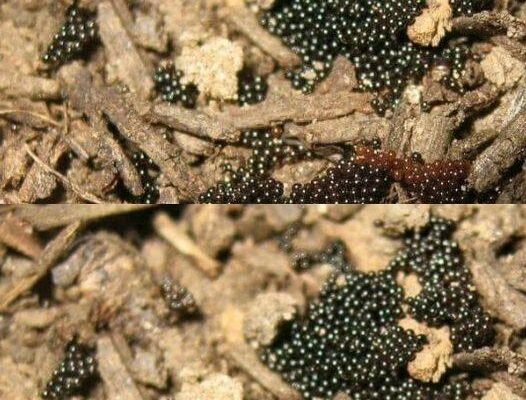Very Important! If you see these eggs in your garden, you need to act immediately! Help us make people aware!
Tick eggs in your backyard are a serious issue that should not be ignored. Ticks are known to transmit diseases, and their eggs, which are frequently discovered in covered outdoor spaces, might serve as the initial stage of an unmanageable infestation. With the help of this thorough tutorial, you should be able to recognize, manage, and avoid tick eggs with more effectiveness.
Identification of Tick Eggs
Tick eggs are very little; they usually have a diameter of 0.5 mm, or the size of a poppy seed. Though this might vary significantly depending on the tick species, they are often oval or pear-shaped and translucent or slightly yellowish in appearance. Ticks frequently deposit their eggs in groups and cling them to nearby surfaces, plants, or leaf litter. They might become more opaque and develop a hue more like to the adult tick of the species as they get older. The texture of the eggs is usually glossy and smooth, and they might be light brown or pale yellow in hue.
The Dangers of Tick Eggs
The possibility that tick eggs will develop into larvae, which may transmit illnesses like Lyme disease and Rocky Mountain Spotted Fever, is the main cause for concern. Tick eggs must be handled carefully if you want to stop the spread of these illnesses.
Removal and Disposal of Tick Eggs
For accurate identification and advice on tick treatment and removal, it is advised that you speak with a veterinarian or a professional pest control specialist when dealing with tick eggs in your backyard. When dealing with individual ticks that have adhered to the skin, gently grasp the tick close to its mouth or head with fine-tipped tweezers and remove it from the skin without squirming or jerking. Once removed, dispose of the tick by flushing it down the toilet, sealing it in a bag, or putting it in alcohol.

Preventive Measures in Your Backyard
- Remove Deer-Attracting Plants: Deer ticks, responsible for spreading Lyme disease, can be deterred by eliminating plants like tulips, hostas, and azaleas, which attract deer.
- Introduce Tick-Repelling Plants: Planting herbs like mint, rosemary, and flowers such as chrysanthemums can help keep ticks away.
- Regular Lawn Maintenance: Keep your lawn mowed and reduce heavy brush and ground cover. This reduces the habitat for ticks.
- Manage Woodpiles and Debris: Ticks lay eggs in dark, moist places. Keep woodpiles elevated off the ground and away from the house.
- Discourage Small Host Animals: Maintain stonewalls and avoid bird feeders that can attract rodents, which are common hosts for ticks.
- Use Natural Tick Repellents: Essential oils like cedarwood, neem, and citronella, and diatomaceous earth can be effective natural repellents.
- Employ Tick Tubes: These are no-spray tools that can kill ticks and prevent diseases.
- Incorporate Rough Textures: Using lava rock or pebble mulch in garden beds makes the area less hospitable for ticks.
- Create Lawn-Free Zones: Use hardscaping to reduce tick habitats.
- Apply Insecticides Carefully: If necessary, use insecticides like synthetic pyrethroids or natural alternatives like cedar oil.
